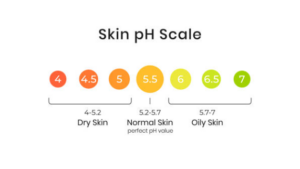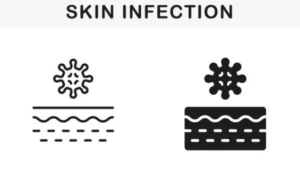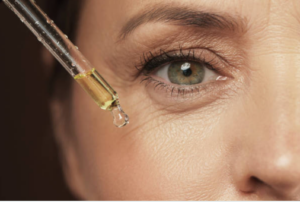Skin Microbiome

In the realm of skincare, we’ve long focused on cleansing, moisturizing, and protecting our skin from external elements. However, recent scientific discoveries have shed light on an exciting frontier—the skin microbiome. This complex ecosystem of microorganisms living on our skin plays a crucial role in maintaining healthy skin function. In this comprehensive beauty blog, we will delve into the fascinating world of the skin microbiome, its impact on our skin’s health, and how we can nurture it for a radiant complexion.
The skin microbiome is an intricate and dynamic ecosystem, comprising a diverse range of microorganisms. These microscopic inhabitants play a multifaceted role in the health and well-being of your skin. To truly understand the significance of the skin microbiome, let’s delve into its various aspects:
- Bacteria: Bacteria are the predominant microorganisms in the skin microbiome. They are classified into two main categories: commensal (friendly) bacteria and pathogenic (harmful) bacteria. Commensal bacteria are essential for skin health, as they outcompete pathogenic bacteria, preventing infections and breakouts.
- Fungi and Yeasts: Fungi, such as Malassezia, are also present on the skin. While some can be beneficial, others may contribute to skin conditions like dandruff and fungal acne.
- Viruses: Viruses on the skin are typically harmless or even beneficial. They can help modulate the immune system and protect against more dangerous viruses.
- Mites: Tiny mites known as Demodex live in hair follicles. Although their presence is normal, an overabundance can be associated with certain skin conditions.
The Three Skin Microbiome Zones:
The skin is not a uniform environment, and neither is its microbiome. Different areas of your skin have unique microbiomes with distinct compositions and functions:
- Sebaceous Zones: These areas, including the face and upper chest, are rich in sebaceous (oil) glands. They are home to oil-loving bacteria, such as Cutibacterium acnes (formerly Propionibacterium acnes), which help break down sebum and maintain a balanced oil production.
- Moist Zones: These include areas like the armpits and groin, characterized by a higher moisture content. Moist zones host diverse microbial communities, including both bacteria and fungi.
- Dry Zones: The forearms and legs, for instance, are classified as dry zones. They have a lower microbial diversity due to the drier environment.
The skin microbiome is not static; it fluctuates based on various factors, including genetics, age, diet, and environmental exposures. It adapts to maintain equilibrium, responding to changes in temperature, humidity, and pH levels.
Within the skin microbiome, microorganisms interact in complex ways. Some microbes cooperate to provide benefits to the skin, such as producing antimicrobial peptides that protect against harmful invaders. Others may compete for resources, influencing the overall balance of the microbiome.
The Skin Microbiome and Skin Health
The skin microbiome is not merely a passive inhabitant on our skin; it plays an active and vital role in maintaining the health and vibrancy of our skin. Let’s explore the ways in which the skin microbiome significantly influences skin health:
Protection Against Pathogens:
Barrier Function: One of the primary roles of the skin microbiome is to serve as a protective barrier. Beneficial bacteria create a microbial shield on the skin’s surface, forming a physical barrier that inhibits harmful microorganisms from entering the skin. This protective barrier is vital in reducing the risk of infections, such as acne, eczema, and fungal conditions.
Microbial Competition: Commensal bacteria within the microbiome actively compete for resources with potentially harmful pathogens. By outcompeting pathogenic microorganisms for space and nutrients, beneficial bacteria help prevent the colonization of harmful species that can lead to skin issues.
Balanced pH Levels:
pH Regulation: The skin’s optimal pH level is slightly acidic, typically ranging between 4.5 and 5.5. Commensal bacteria on the skin produce metabolic byproducts that help maintain this acidic environment. A balanced pH level is crucial for healthy skin function, as it supports the skin’s natural defenses and prevents dryness, irritation, and excessive oiliness.

Anti-Aging Properties:
Collagen Production: Some strains of probiotic bacteria, such as Lactobacillus and Bifidobacterium, have been shown to stimulate collagen production in the skin. Collagen is essential for maintaining skin elasticity and firmness, making it a key factor in reducing the appearance of fine lines and wrinkles.
Protection from UV Damage: Beneficial bacteria may also offer protection against UV radiation, a leading cause of premature skin aging. Research suggests that certain strains of bacteria can enhance the skin’s ability to defend against UV-induced damage.
Skin Conditions and Inflammation Control:
Reduced Inflammation: A balanced skin microbiome can help control inflammation, which is often at the root of various skin conditions. By promoting a harmonious microbial environment, the skin is less prone to inflammation-related issues like redness, rosacea, and psoriasis.
Improved Barrier Function: A healthy microbiome contributes to the skin’s overall barrier function. A strong skin barrier is essential for preventing moisture loss and protecting against external irritants, helping to alleviate conditions like dryness and eczema.

Common Disruptions to the Skin Microbiome
The skin microbiome is a finely tuned ecosystem, and disruptions to this delicate balance can have adverse effects on your skin. Several common disruptors can negatively impact your skin’s microbial harmony, leading to various skin issues. Let’s explore these disruptors in detail:
Broad-Spectrum Antibiotics: Antibiotics prescribed for infections can inadvertently target both harmful and beneficial bacteria on the skin. This disruption can lead to imbalances, allowing opportunistic pathogens to thrive and potentially result in skin issues like acne or fungal infections.
Topical Steroids: While topical steroids are effective for reducing inflammation, prolonged use can compromise the skin’s natural defenses and lead to an overgrowth of harmful microorganisms.
Cleansers with Harsh Surfactants: Cleansers containing harsh surfactants and detergents can strip away the skin’s natural oils, disrupting the microbiome’s balance. This can result in dryness, irritation, and an increased risk of skin conditions.
Alcohol-based Products: Products containing high levels of alcohol can disrupt the skin’s pH balance and strip away essential oils, negatively impacting the microbiome’s health.
Chemical Exfoliants: Overuse of chemical exfoliants, such as alpha hydroxy acids (AHAs) and beta hydroxy acids (BHAs), can damage the skin barrier and disturb the microbial balance, leading to sensitivity and inflammation.
UV Radiation: Prolonged exposure to UV radiation from the sun can alter the composition of the skin microbiome. UV radiation can negatively impact beneficial bacteria, potentially contributing to skin conditions and premature aging.
Pollution and Toxins: Environmental pollutants and toxins can disrupt the skin’s microbial balance. Particulate matter, chemicals, and airborne pollutants can contribute to oxidative stress and inflammation.
Chronic Stress: High levels of stress can affect the skin microbiome through hormonal changes and immune system responses. Stress-related changes in the microbiome can contribute to skin conditions like acne and eczema.
Dietary Choices: Poor dietary habits, such as excessive sugar consumption and a lack of fiber-rich foods, can negatively impact the skin microbiome. A diet lacking in essential nutrients can create an environment where harmful bacteria thrive.
Overwashing: Frequent and aggressive cleansing can strip the skin of its natural oils and disturb the microbiome’s equilibrium. Over time, this can lead to dryness, sensitivity, and an increased risk of skin issues.
Humidity Levels: Extreme fluctuations in humidity, such as very dry or very humid conditions, can affect the skin’s microbiome. Dry conditions can lead to dry skin, while high humidity can create an environment favorable for the growth of certain microorganisms.
Nurturing Your Skin Microbiome Naturally
Now that we understand the significance of the skin microbiome and the potential disruptors, it’s time to explore how to nurture this essential ecosystem naturally. Here are several key strategies to help you support and enhance your skin’s microbial balance:
Probiotic Skincare: Look for skincare products that contain live probiotic cultures or postbiotics (byproducts of probiotic fermentation). Probiotic skincare can help restore and maintain a healthy microbial balance on your skin.
Prebiotics: Prebiotics are non-digestible compounds that serve as food for beneficial bacteria. Incorporate prebiotic-rich ingredients like chicory root extract, oats, and honey into your skincare routine to encourage the growth of friendly microbes.
Sulfate-free Cleansers: Opt for gentle, sulfate-free cleansers that cleanse without stripping the skin’s natural oils. Harsh detergents can disrupt the microbiome.
Limit Overwashing: Resist the urge to overwash your face. Cleansing too frequently can deplete your skin’s natural oils and disrupt the microbiome’s balance. Opt for gentle cleansing in the morning and evening, and after sweating.
Avoid Hot Water: Use lukewarm water when cleansing your face, as hot water can be harsh and drying.
Probiotic-Rich Foods: Incorporate probiotic-rich foods like yogurt, kefir, kimchi, sauerkraut, and kombucha into your diet. These foods can help support a healthy gut microbiome, which in turn benefits your skin’s microbiome.
Fiber and Antioxidants: Consume a diet rich in fiber from fruits and vegetables. Fiber supports overall gut health, which can positively impact the skin microbiome. Antioxidant-rich foods like berries and leafy greens help combat oxidative stress.
Stay Hydrated: Proper hydration is essential for healthy skin. Drinking enough water supports skin barrier function and helps maintain a balanced microbiome.
Stress Reduction: Engage in stress-reducing practices such as mindfulness meditation, yoga, or deep breathing exercises. Lowering stress levels can have a positive impact on both your gut and skin microbiomes.
Probiotic Supplements: If you must take antibiotics, consider taking probiotic supplements to help replenish the beneficial bacteria in your gut and on your skin.
Honey and Turmeric Masks: Honey has natural antibacterial properties and can be used as a mask to soothe and support the skin. Combining honey with turmeric, which has anti-inflammatory benefits, can be particularly effective.
Tea Tree Oil Spot Treatment: For acne-prone skin, dilute tea tree oil with a carrier oil and apply it as a spot treatment. Tea tree oil has antimicrobial properties that can help combat acne-causing bacteria.

Professional Guidance: Consult a dermatologist for personalized advice and treatments that support your skin’s specific needs and microbiome health.
The skincare industry is evolving, and the future looks promising with microbiome-based products. We’ll discuss:
- Probiotic Skincare: Learn about probiotic-rich products that can help restore your skin’s natural balance and enhance its health.
- Prebiotics and Postbiotics: Understand how prebiotics and postbiotics can work synergistically with probiotics to support a thriving skin microbiome.
- Microbiome-friendly Formulations: Discover how leading skincare brands are formulating products that respect your skin’s microbial inhabitants.
Explore inspiring personal stories of individuals who have experienced remarkable transformations in their skin by adopting microbiome-friendly skincare routines. Their journeys will show you the potential of nurturing your skin’s microbiome.
As we wrap up this journey through the world of the skin microbiome, you’ll have a profound appreciation for the role these tiny organisms play in maintaining healthy, glowing skin. The future of skincare is undoubtedly intertwined with the microbiome, offering new possibilities for achieving radiant and balanced skin naturally.
By embracing the principles of microbiome-friendly skincare, you can join the movement toward healthier, more sustainable beauty routines. So, let’s celebrate the incredible ecosystem living on our skin and embark on a journey toward a harmonious, glowing complexion—the natural way.

